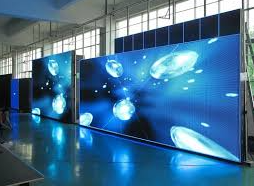In the fast-paced world of visual technology, the development of Surface Mount Device (SMD) LED screens stands out as a transformative force, revolutionizing the way we encounter and interact with visual content. This article delves into the evolution of SMD LED screen technology, exploring its advancements, applications, and the profound impact it has on enhancing visual experiences across various domains.
Understanding SMD LED Screen Technology
Surface Mount Device (SMD) LED screens represent a remarkable advancement in display technology. Unlike traditional displays, SMD LED Screen leverage light-emitting diodes (LEDs) that are directly mounted onto the surface of the screen’s circuit board. This innovation results in a compact and efficient design, offering benefits such as enhanced brightness, energy efficiency, and improved color reproduction.
The integration of LED technology into SMD screens has been a game-changer, particularly in applications where vibrant and dynamic visuals are crucial. From large-scale digital billboards to high-definition television screens, SMD LED technology has become synonymous with superior image quality and versatility.
Advancements in SMD LED Technology
Pixel Density and Resolution
Over the years, SMD LED screens have witnessed significant improvements in pixel density and resolution. Higher pixel counts contribute to sharper images and allow for the creation of large displays with intricate details, making them ideal for applications in advertising, entertainment, and digital signage.
Color Accuracy and Vividness
SMD LED screens boast exceptional color accuracy and vividness, providing a more true-to-life representation of images and videos. This advancement is particularly crucial in industries like broadcast, where accurate color reproduction is paramount.
Slimmer Profiles and Flexible Displays
Ongoing research and development efforts have led to the creation of SMD LED screens with slimmer profiles and the capability to be integrated into flexible displays. This innovation opens up new possibilities for design in areas such as curved screens, wearable technology, and unconventional display shapes.
Energy Efficiency
SMD LED technology is inherently energy-efficient, making it an environmentally conscious choice for display solutions. The ability to deliver bright and vibrant visuals while minimizing power consumption aligns with global sustainability goals and reduces the operational costs of businesses utilizing these displays.
Applications Across Industries
Outdoor Advertising
SMD LED screens have become a staple in outdoor advertising, dominating cityscapes with vibrant and eye-catching displays. The ability to withstand various weather conditions, coupled with high brightness levels, makes SMD LED screens the preferred choice for digital billboards and large-scale advertising installations.
Entertainment and Sports
The entertainment industry has embraced SMD LED screens for concerts, live events, and sports arenas. The high refresh rates, superior color reproduction, and seamless integration with video production systems contribute to immersive audience experiences.
Broadcast and Studio Production
In the world of broadcast and studio production, SMD LED screens are used for virtual sets and background displays. The ability to create realistic and dynamic backgrounds enhances the visual appeal of news broadcasts, talk shows, and virtual events.
Command and Control Centers
SMD LED screens find applications in command and control centers where real-time information and data visualization are critical. The high resolution and reliability of SMD LED technology make it an essential tool in situations that demand precision and accuracy.
Enhancing Visual Experiences
The development of SMD LED screen technology has played a pivotal role in enhancing visual experiences across various contexts. The immersive nature of these displays, coupled with their ability to deliver vibrant and high-resolution visuals, contributes to a heightened sense of engagement.
In the realm of gaming, for example, SMD LED screens with high refresh rates and low latency provide gamers with a responsive and visually stunning environment. The lifelike colors and contrast ratios contribute to a more immersive gaming experience, blurring the lines between virtual and reality.
Challenges and Considerations
While SMD LED screens offer a multitude of benefits, there are challenges and considerations that come with their widespread adoption. One key consideration is the potential for light pollution in outdoor applications. Striking a balance between creating attention-grabbing displays and minimizing environmental impact is crucial in urban planning.
Additionally, as technology continues to advance, there is a challenge in ensuring compatibility and seamless integration with emerging content delivery platforms. Designers and content creators need to stay abreast of the latest developments to fully harness the capabilities of SMD LED technology.
Conclusion
In conclusion, the development of SMD LED screen technology has ushered in a new era of visual experiences. From outdoor advertising to immersive gaming environments, SMD LED screens have become indispensable tools for conveying information, captivating audiences, and pushing the boundaries of what is possible in display technology.
As advancements in SMD LED technology continue, we can expect even more remarkable innovations, further enhancing the quality and versatility of visual displays. The marriage of vibrant visuals, energy efficiency, and flexibility positions SMD LED screens as a driving force in shaping the future of visual communication.
FAQs
Q1: How does SMD LED screen technology improve outdoor advertising?
A: SMD LED screens in outdoor advertising offer high brightness, vibrant displays, and the ability to withstand various weather conditions, making them ideal for large-scale digital billboards and advertising installations.
Q2: What applications does SMD LED technology have in the entertainment industry?
A: SMD LED screens are widely used in the entertainment industry for concerts, live events, and sports arenas, providing immersive experiences with high refresh rates and superior color reproduction.
Q3: How does SMD LED technology contribute to educational settings?
A: SMD LED screens enhance educational settings by facilitating interactive learning experiences. They are used in classrooms as interactive whiteboards and in museums for dynamic educational displays.
Q4: What challenges come with the adoption of SMD LED screens?
A: Challenges include potential light pollution in outdoor applications and the need for designers and content creators to stay updated on the latest advancements for seamless integration with emerging content delivery platforms.

